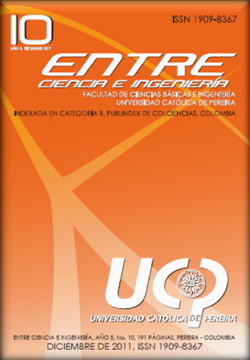Teaching Mathematics through Virtual Learning Objects at Universidad Católica de Pereira
Keywords:
Virtual Learning Object, , Information and Communications Technologies, competences, virtual, learning, metadataAbstract
This article presents the results of a research carried out in order tomotivate students in the learning process of mathematics through the useof Virtual Learning Objects (OVA) and having as a significant departureteaching practices based in context, since it is one of the areas havinghigher academic mortality in educational institutions in our country.The aim is to transform some teaching practices in this area and developa Virtual Learning Object to be used as a motivating axis among student -teacher - discipline and to provide the student with the acquisition of skills,competences, and abilities inherent to those proposed by the NationalMinistry of Education.It is very important to consider that the design and construction of theOVA is a fundamental aspect when appropriating a methodology thataims to consolidate mathematical concepts and specific knowledge in thestudents.An aspect taken into account when designing these “objects” is that thestudents use this resource as much as possible; that is why they mustbe developed with specifications of adaptability, accessibility and easynavigation
References
Batanero, C. (2001). Didáctica de la Estadística. Granada: Servicio de Reprografia de la facultad de Ciencias .
Bowen, J., & Hobson, P. (2004). Teorias de la Educacíon. Limusa.
CAREY, J. (1989). Interactive Media”. International Encyclopedia of Communications. Vol 2. New York: Oxford University Press.
Díaz-Camacho, J. E. (2002). Psychology Applied to Web Course Design. San Diego: Alliant.
Ernets, P. (1991). The Philosophy of Mathematics Education. London: The Falmer.
Goméz Buendia, H. (1998). Educación: La Agenda del Siglo XXI. Santafé de Bogotá: PNUD y Tercer Mundo Editores.
Gros, B. (2000). Ordenador Invisible: El Camino Hacia la Apropiacion del Ordenador en la Enseñanza. Barcelona: Gedisa. • Krulik, S., & Reys, R. (1980). Problem Solving in School Mathematics. Reston: Yearbook.
Levin, R. L. (2004). Estadística para Administración y Economía. México: PEARSON.
Samper De Zubiria, J. (1994). Los Modelos Pedagógicos. Santafé de Bogotá: Fundación Alberto Merani.
WEBGRAFÍA
Comunicaciones, M. d. (Marzo de 2008). Colombiaplantic. Recuperado el 8 de Noviembre de 2009, de http://www.colombiaplantic.org.co/ medios/docs/PLAN_TIC_COLOMBIA.pdf
MAGNI, S. R. (s.f.). Rol del Docente en el Tercer Milenio. Recuperado el 2 de Noviembre de 2011, de http://www.educar.org/ articulos/roldocente.asp
MEN. (s.f.). Ministerio de Educación Nacional. Recuperado el 15 de Noviembre de 2009, de http://www.mineducacion.gov.co
Morales G, R., & Agüera H, A. S. (2002). Capacitación Basada en Objetos Reusables de Aprendizaje. Obtenido de http://www.umb. edu.co/umb/sitiopedagogia/lecturas/tendencias.pdf
Nacional, M. d. (s.f.). Colombiaaprende. Recuperado el 1 de 10 de 2010, de http://www.colombiaaprende.edu.co/html/directivos/1598/ article-88892.html#h2_1
Velez de C, A. M. (s.f.). http://www.c5.cl/ieinvestiga/actas/ribie98/190M. html. Recuperado el 11 de Noviembre de 2009, de http://www.c5.cl/ ieinvestiga/actas/ribie98/190M.html: http://www.c5.cl/ieinvestiga/ actas/ribie98/190M.html








 Revista Entre Ciencia e Ingeniería
Revista Entre Ciencia e Ingeniería .png) entrecei@ucp.edu.co
entrecei@ucp.edu.co.png) ISSN (Impreso) 1909-8367 - ISSN (En Línea) 2539-4169
ISSN (Impreso) 1909-8367 - ISSN (En Línea) 2539-4169 Attribution-NonCommercial 4.0 International (CC By-NC 4.0)
Attribution-NonCommercial 4.0 International (CC By-NC 4.0)
.png) Carrera 21 No. 49-95 Av. de las Américas, Pereira, Risaralda, Colombia
Carrera 21 No. 49-95 Av. de las Américas, Pereira, Risaralda, Colombia